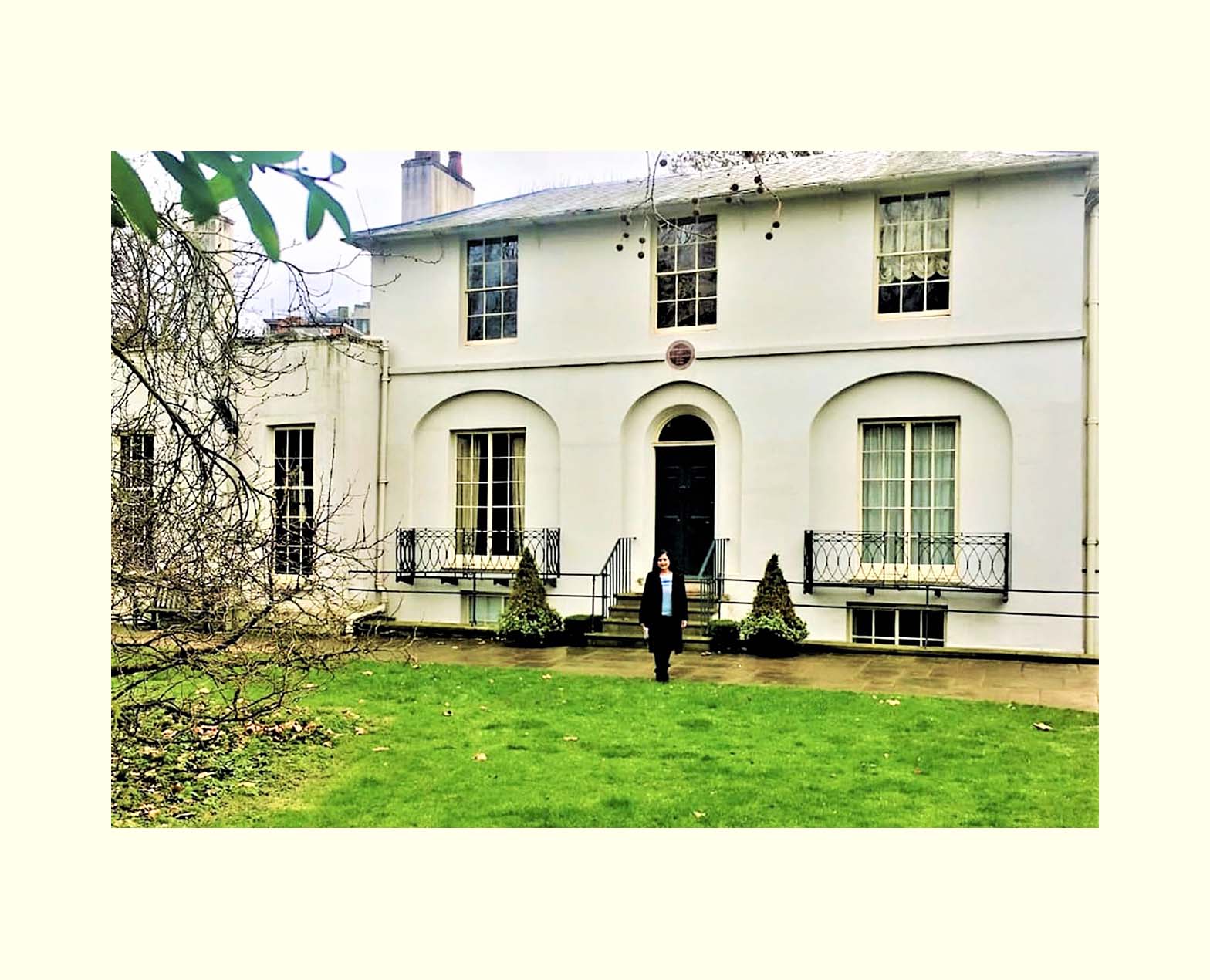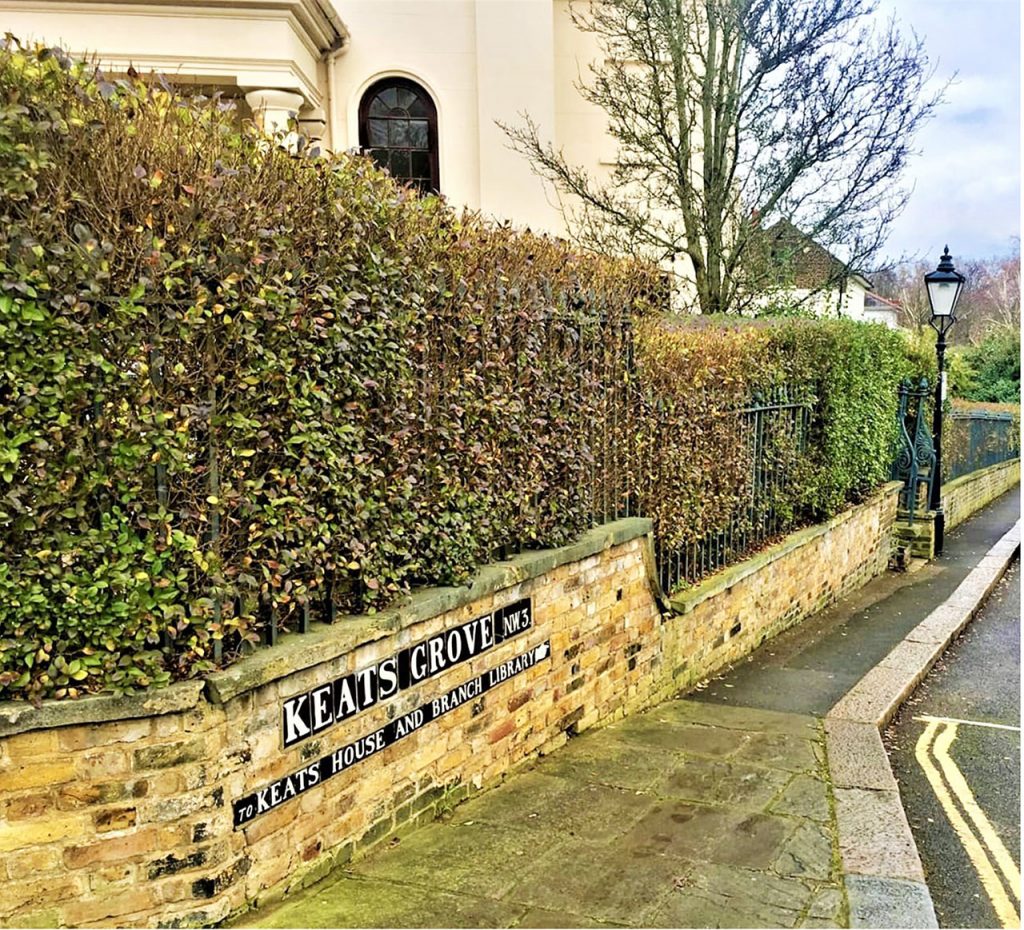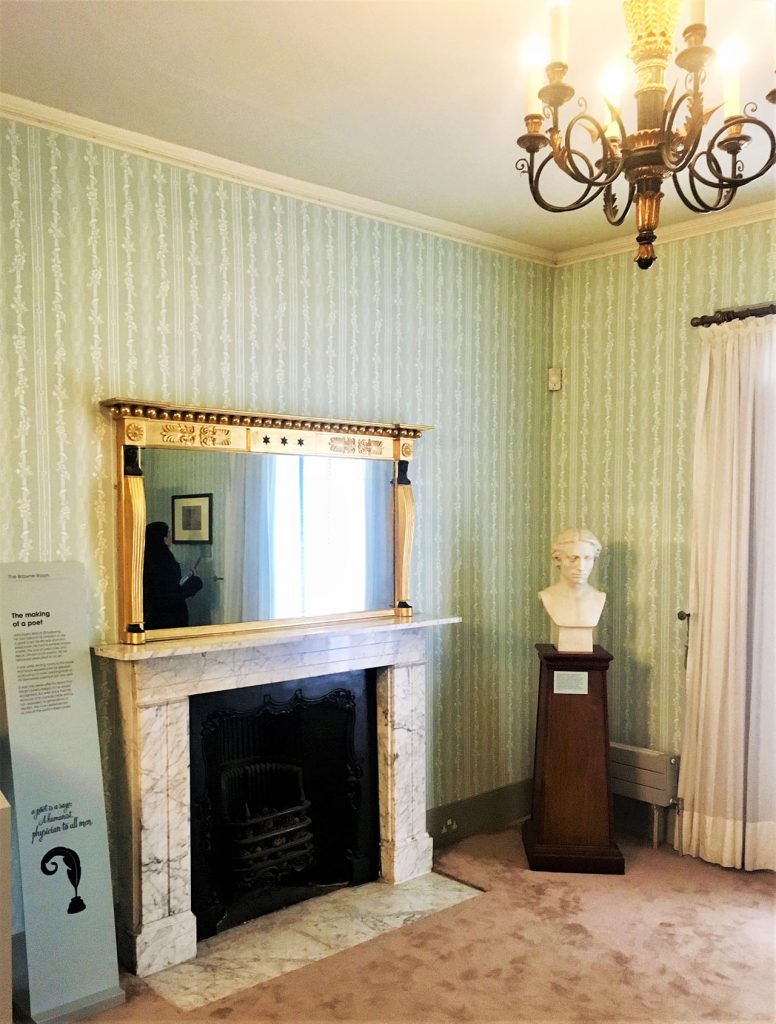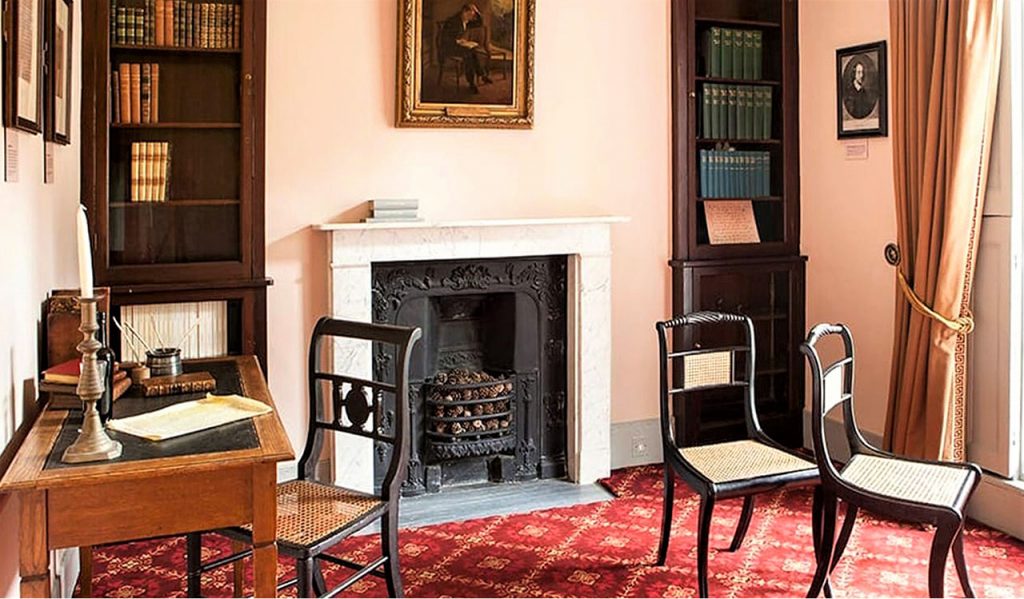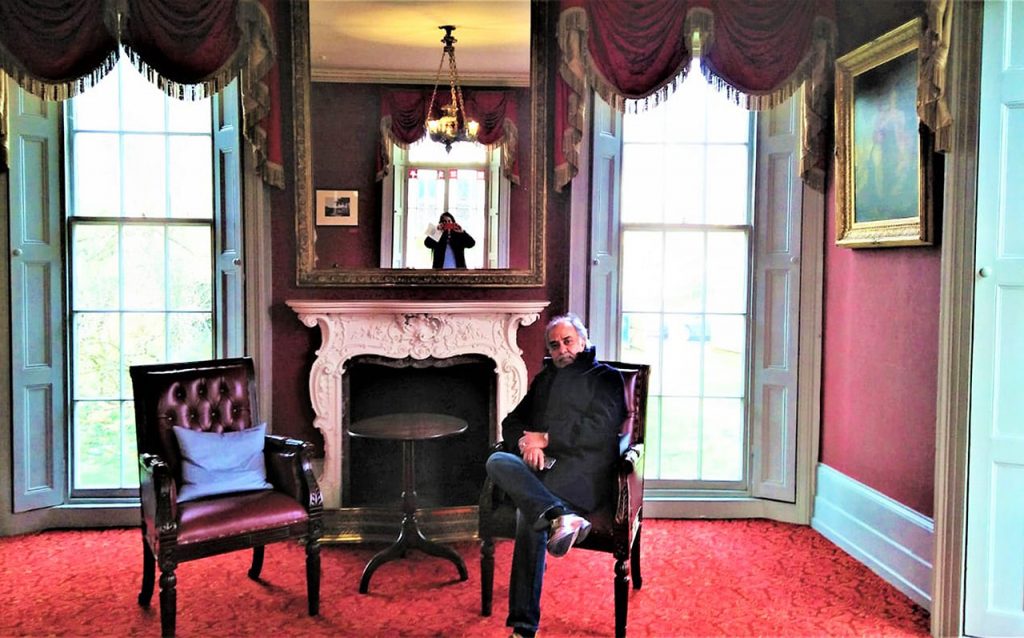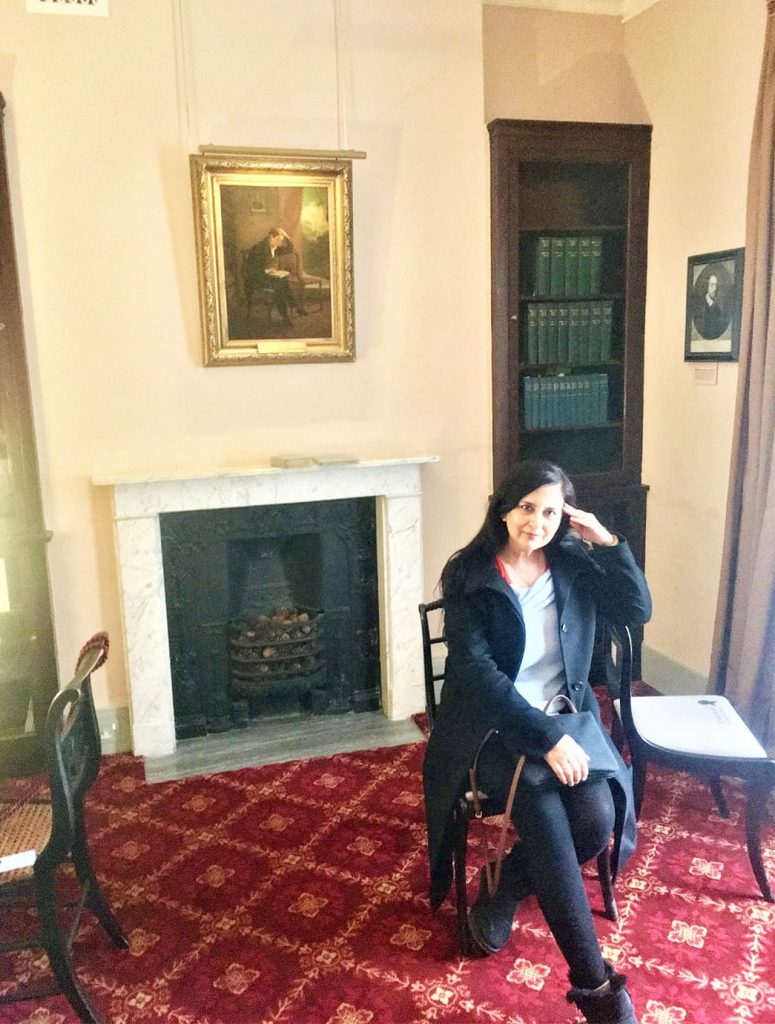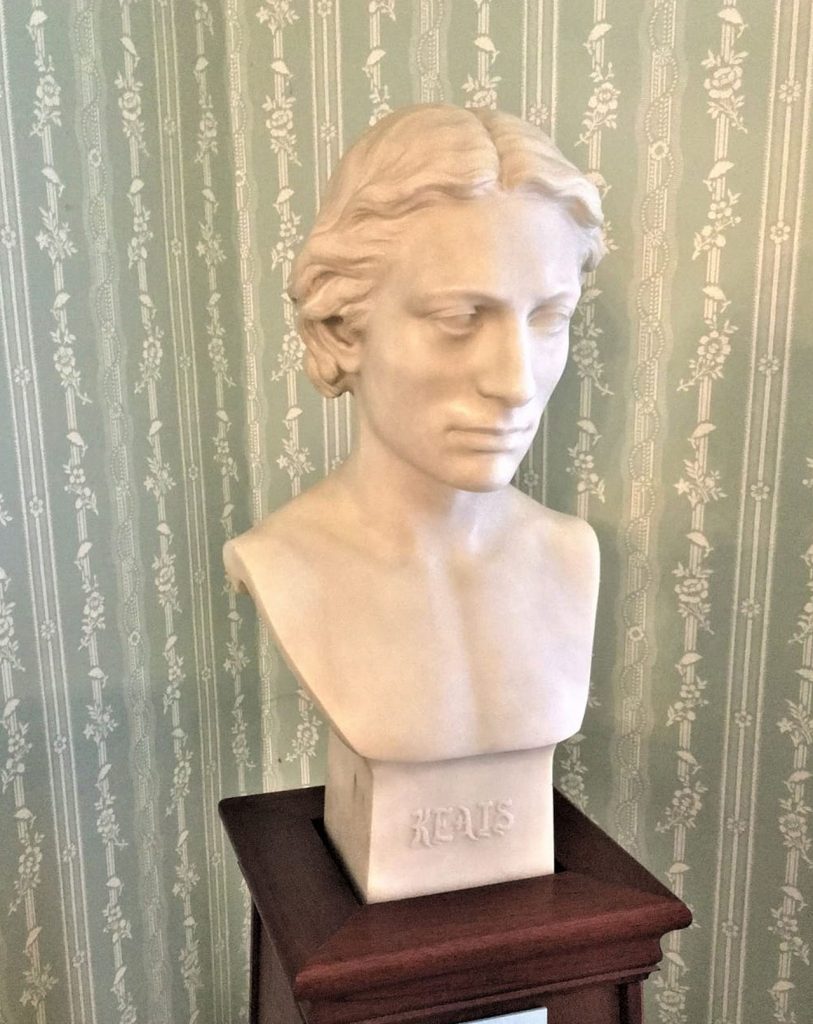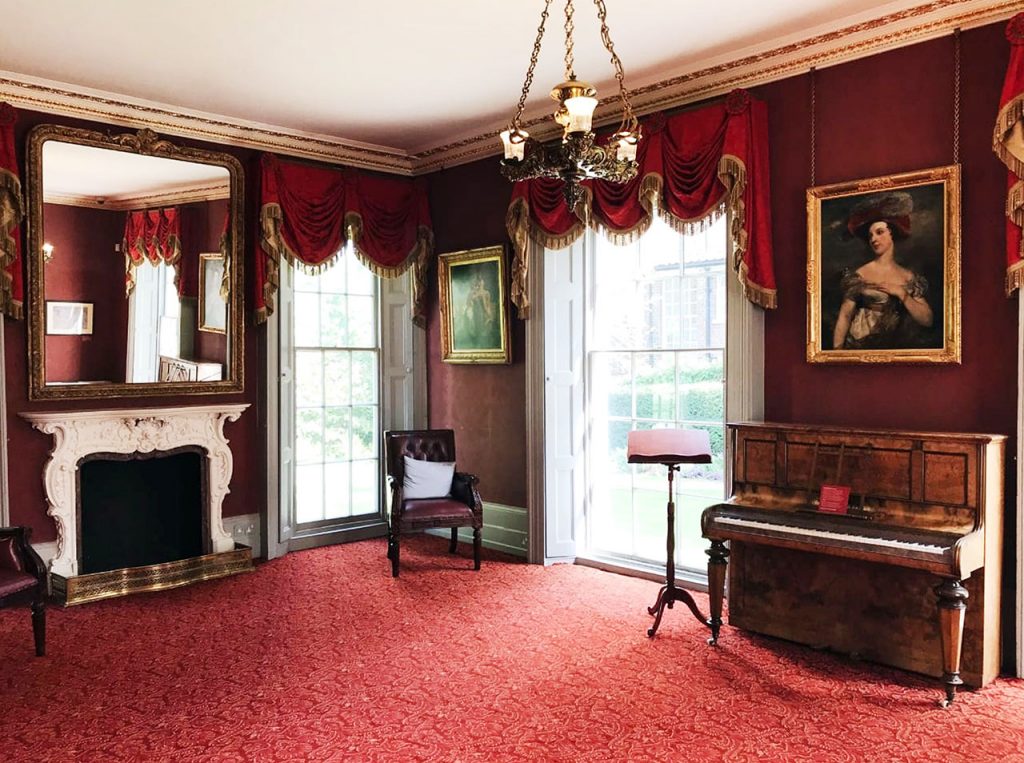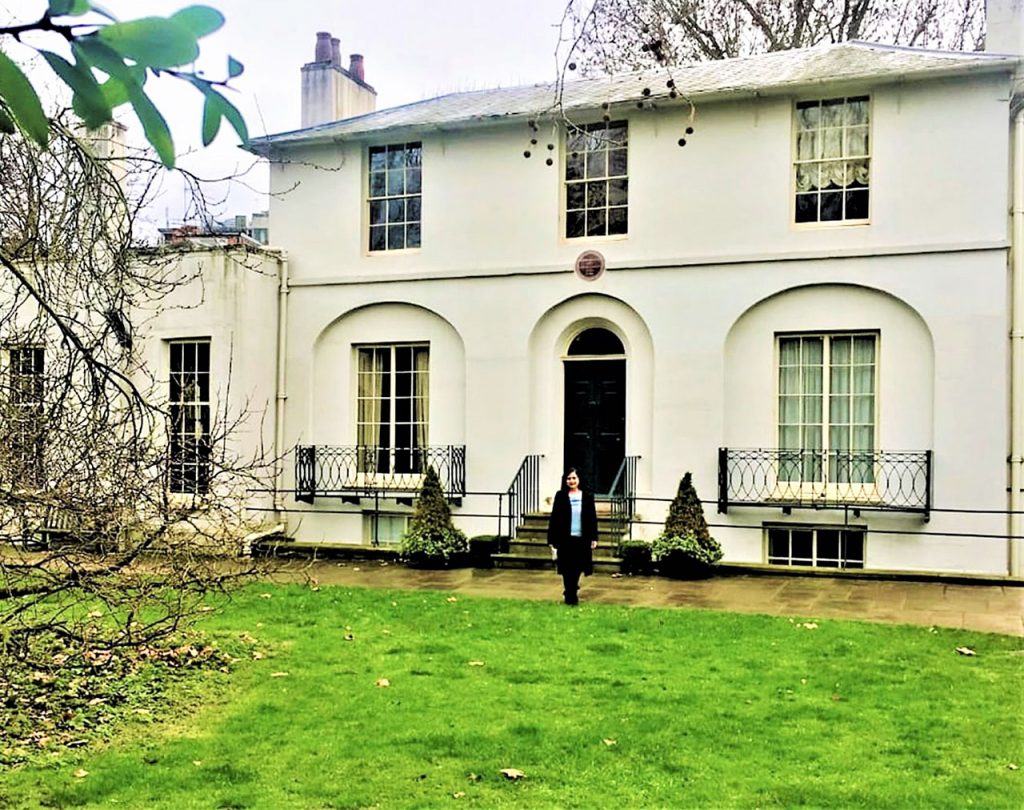A Thing of Beauty is a Joy Forever- the short story of John Keats
On a cold cloudy winter morning we hurried on the Keats Grove road to finally came across a board that announced ‘It was a poet’s house who keeps the keys of pleasure’s temple’ outside the home of the romantic poet John Keats. We were in the beautiful Hampstead Heath in England at the Keats House Museum – Wentworth Place. We walked across the lawn to the fine-looking regency villa whose museum and literary centre restore the memory and legacy of Keats through its visit. Keats House was like stepping back 200 years to discern John Keats passionate writing followed by fierce criticism he received for it in his short life! He wrote the best loved poems here before he untimely passed away at 25!!
Story of Keats – Brawne Room
We entered a room named after the Brawne family who lived on this side of the house, 1819 onwards and Keats later married their beautiful daughter Fanny! We unveiled Keats life and works through its exhibits, manuscripts, bust and interesting anecdotes display alongwith friendly interjections by the volunteer.
The House unfolds the story of a young poet who loved it and which inspired him to pen his best poetry while he was here, finding friendships too. Ironically he gained fame posthumously for the work written during his brief stay at Wentworth Place now known as Keats House due to his friends who kept his legacy alive!
A volunteer added that the three Keats brothers moved to ‘green emerald’ Hampstead for healthier environment into a home in 1817. Within a year his one brother moved to America and the other passed away so to escape loneliness, he relocated himself at Wentworth house across the road in maybe 1818 to live with his friend Charles Brown who owned it as well. The House was built by Charles Wentworth Dilke in 1816, from whom the house takes its name. He let a part of the house to his friend Charles Brown who invited John Keats to move in after Charles Wentworth Dilke moved out. Keats loved Wentworth Place with high ceilings and large windows that lit up the rooms with natural light and felt his spirits raised.
We were told that Keats poetic genius was stirred and inspired by his study of eminent literary masters like – Shakespeare, Milton, Dante and Wordsworth!
Hallway that Was
Through an archway in the wall we entered John Keats-Charles Brown part of the house as the House was originally divided into two homes! The Brawnes lived on the other side and this was the Hallway that held a staircase too.
Keats Parlour and the Photograph
We next moved into Keats parlour refurbished from a portrait- the wooden shutters, fire-grate, Shakespeare book and a Study- table displaying newspaper The Examiner from Sunday 12th February 1815; transported one to the bygone era! The Examiner was the newspaper of their friend Leigh Hunt- a radical poet and editor, that campaigned religious tolerance.
The chair held a placard that invited the visitor to sit on it and get photographed in exactly the same pose as John Keats photograph on the wall behind it! We loved the novel idea and did so with enthusiasm.
Charles Brown Parlour and Keats
I could imagine Keats and Brown entertain friends who were artists, writers and musicians, in this room. Keats radical friends supported his poetic aspirations but made him unpopular with mainstream critics!
We were informed by the volunteer that during his infectious illness Keats sometimes lay down in this room to look out of the window at the garden and the natural beauty of the Hampstead Heath beyond and more than anything at his loving wife Fanny as the doctors advised not to meet!
The Grand Chester room- a different room
At the end of the corridor we came across a splendid room with rich maroon interiors – walls, carpet, drape-curtains that was quite out of character of the rest of the house! The volunteer said it was the beautiful Chester room that was added by a retired actress Eliza Jane Chester, one of the owners of Wentworth–Place in 1838, for guest entertainment. She was a favourite of King George IV. Also, she combined the 2 Houses into one home to make them roomier!
Today it is a special all-around the year Event-room that held a piano too and a placard on it which informed that by 1880’s Keats poetry was growing increasingly popular and his admirers looked for his Hampstead home and subsequently put a dedication Blue Plaque of the Royal Society of Arts; on it by 1895 to commemorate Keats stay at the House. When threatened by demolition in 1920, Keats Memorial House fund society saved it and opened it to public in 1925! We were impressed with these facts!
Downstairs- the candle Kitchen
We seemed to walk backwards into a 200 years old regency-style Brawne’s Kitchen, displaying servant bells system alongwith the original Welsh Dresser intact exhibiting unpretentious yet elegant crockery, jars and bowls. I could imagine the simple food of roasts and pies, adding vegetables and fruit from the house garden in the candles and oil-lamps lit kitchen, being served. We spotted a tradesman’s deliveries entrance too.
Before gong upstairs we saw a short soul-stirring film on Keats life in another Basement room that was the Brown’s Kitchen in the times gone by.
Upstairs again – the fairy tale wedding
We eagerly entered fashionable and witty Fanny’s room- John Keats wife, to look for her wedding ring display that she treasured for the rest of her life as Keats passed away less than after 2 years of their fairy tale romantic marriage. Sadly, as Keats inherited the dreaded, incurable disease of the 19th century –Tuberculosis so the doctors advised them to live in separate rooms and they could exchange letters only.
A placard invited the lady visitors to rummage through the open trunk and find a hat or Bonnet to be photographed in Fanny’s style which I did after trying diverse styles!
John Keats Bed room-from poetry to illness
This pale pink room was where John Keats thought and composed. Characters of his poems were portrayed as sleeping and dreaming to enter into the world of imagination! So I could envision him composing and creating so many of his writings here.
There was an unmistakable air of sadness in the room where regrettably, he discovered that his illness was terminal!
Charles Brown’s Bedroom- story of a true friend
Charles Brown was Keats closest friend who helped him till the end, additionally carrying on his legacy after his death to earn him the celebrity status he deserved during his lifetime. Today this room helped us uncover the stories of how it was done, through printed displays!
Gallery of soul stirring poetry
A climb up to the Gallery at the top of the house revealed a deeply interesting exhibition- Keats at Wentworth Place using collection of historical images of London. We were impressed with the idea that Keats eminent poems had been illustrated by prominent artists later with few lines of the poem printed below the illustrations and they are exhibited in the famous art galleries of England like Tate’s gallery.
Endymion the romantic poetry from 1817, illustrated 1894 from which I borrowed my title, best loved poem and Gothic love story on the prevalent legend attached to The Eve of St. Agnes 1819 and painted in 1848, Greek goddess’s poem Ode to Psyche written 1819, illustrated 1897, Lamia – a Greek myth from 1819-20 and painted in 1930, La Belle Dame sans Merci written 1819 inspired by a French 15th century poem and painted in 1902 and many more!
Landing – Keats last journey
The Landing of the house holds the wretched story of Keats last journey to warmer climate of Rome following medical advice with money raised by friends. He parted from his love Fanny exchanging a few gifts- a ring, a diary, books and a lock of hair. An apt quote from The Complete poems by John Keats was printed there
Life is but a day;
A fragile dew drops
On its perilous way
From a trees summit
The wall holds an image of Keats grave in Rome as he had passed away there in February 1821 and avoided looking at the Death Mask hanging on the wall!
At another spot on the Landing of the Staircase we came across a Lead Sink to hold rain water collected from the roof, an interesting exemplar of the Regency period plumbing that may have been there since Keats era!
On the drive back my thoughts turned to an expression read earlier that Keats poetry ‘reaches beyond the ordinary world’ as poetry still ranks high in this world of science and politics!!Till today, Keats favourite line that mirrors his comprehensive bliss, resonates in our minds – Give me Books, fruit, French wine and fine weather!
Photo Courtesy: Sh. Arvind Chopra
